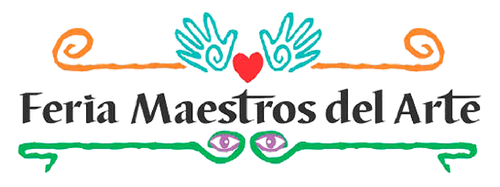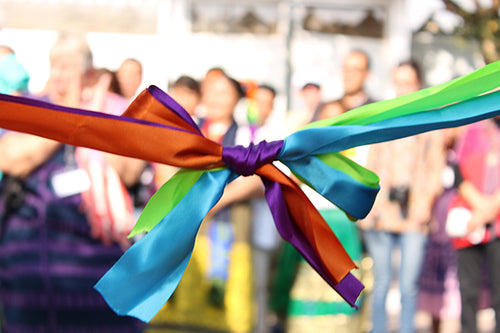
Jan Cristhian Mata Ferrer San Felipe Santiago, Villa de Allende, Mexico
Throughout his life Jan Cristhian grew up surrounded by colorful, unique and beautiful textiles. But since he was a little boy he noticed that women were the only ones who performed embroidery work so at the age of ten he asked his mother, "Why don't men embroider?" to which she replied, "Men can't embroider, you have to do something else." Time passed and Jan saw her aunt embroidering a cushion. When he asked her, she explained the process of how it was done. It took her three years to learn the techniques of embroidery. This artistic expression became her passion.
Since then Jan has participated in contests, given lectures about her life and Mazahua embroidery as well as trained over four hundred people in textile arts workshops to learn embroidery. One of the highlights of her life was participating in the 10th UNESCO Youth Forum held in Paris, France. The event helped her to focus her trajectory on the importance of her intangible cultural heritage. For his work and dedication to preserving Mazahua embroidery he was awarded the 2018 National Youth Award in the Artistic Expressions and Popular Arts distinction, in addition to being a winner in numerous national competitions.
Jan is the third generation to continue the family tradition of Mazahua embroidery and works alongside ten other artisans. In Mazahua embroidery, originally from the community of San Felipe Santiago, seven different techniques are practiced: Two-needle loin stitch (using two needles, a variant of cross stitch) where one diagonal is longer than the other. The stitch can be used to outline the elements or fill them in) Pepenado (Fine stitch normally used on shirts and blouses. This stitch is in danger of disappearing because it is very time consuming) Cross stitch, Careado, Hilvanado (embroidery deer?) and Embroidery of a needle (This embroidery is little known, but is distinguished by the versed of the textile).
The workshop "El Xicola", which in Mazahua means "dog tailed" or "hungry dog", began its work in 2018 and has three purposes: to rescue, disseminate and preserve Mazahua textiles. Ten family members participate in it. The Mazahua designs are not just a craft, but represent an expression of Mazahua ideals. The traditional elements that are embroidered represent the local flora and fauna, such as deer, birds, flowers and the eight-pointed Mazahua star. These complex patterns are created without guidance or tracing on the fabric. The artisans (who are mostly women) count the threads to make a straight, evenly spaced design. A unique feature of Mazahua embroidery is the use of a decorative stitch on the edges of the pieces used for example on napkins and similar pieces.
San Felipe Santiago, Villa de Allende, Mexico
554 495 6000 celular
Whatsapp & Mess
bordadomazahua@gmail.com
Facebook:bordadomazahua o jancristhian

